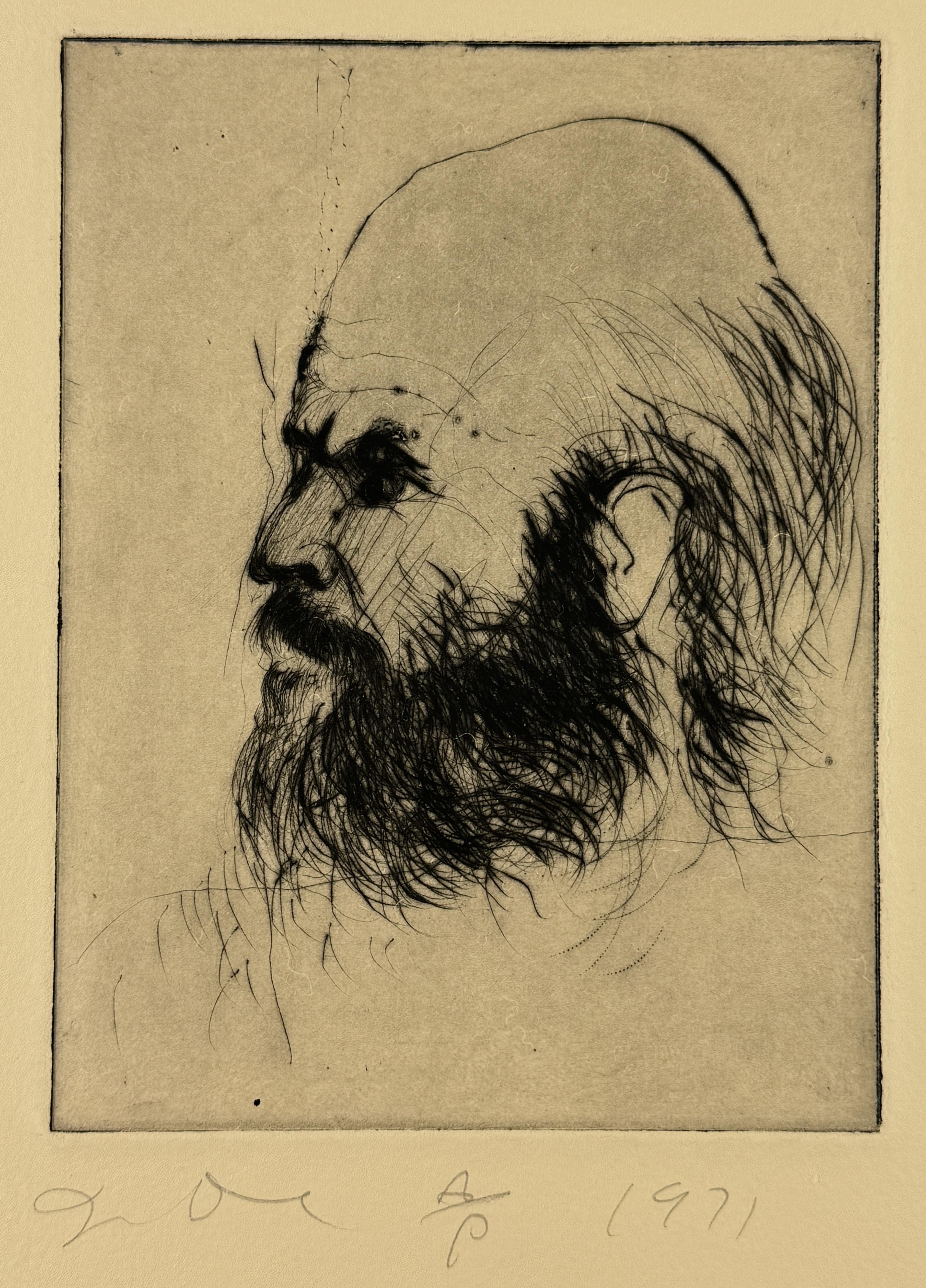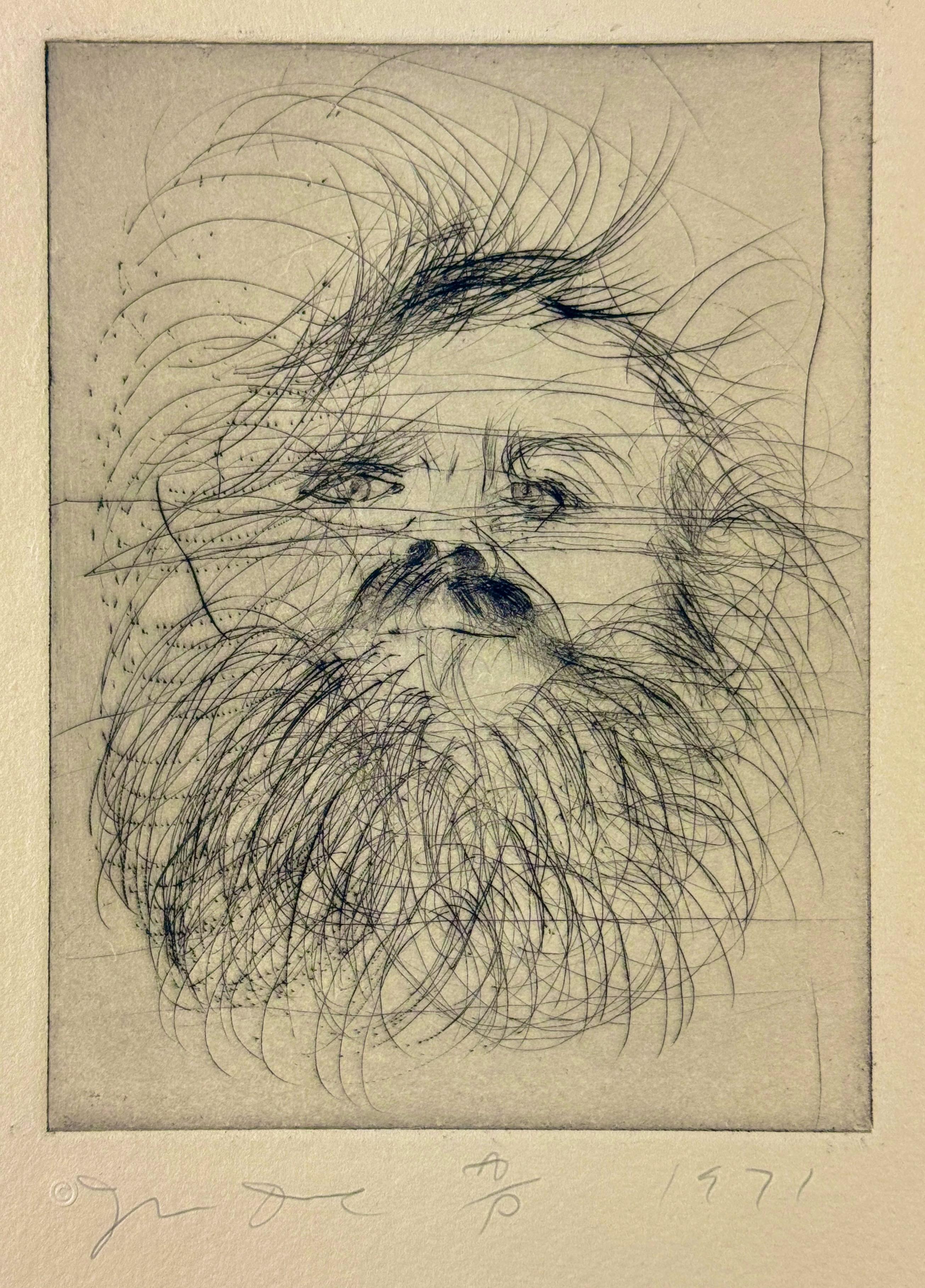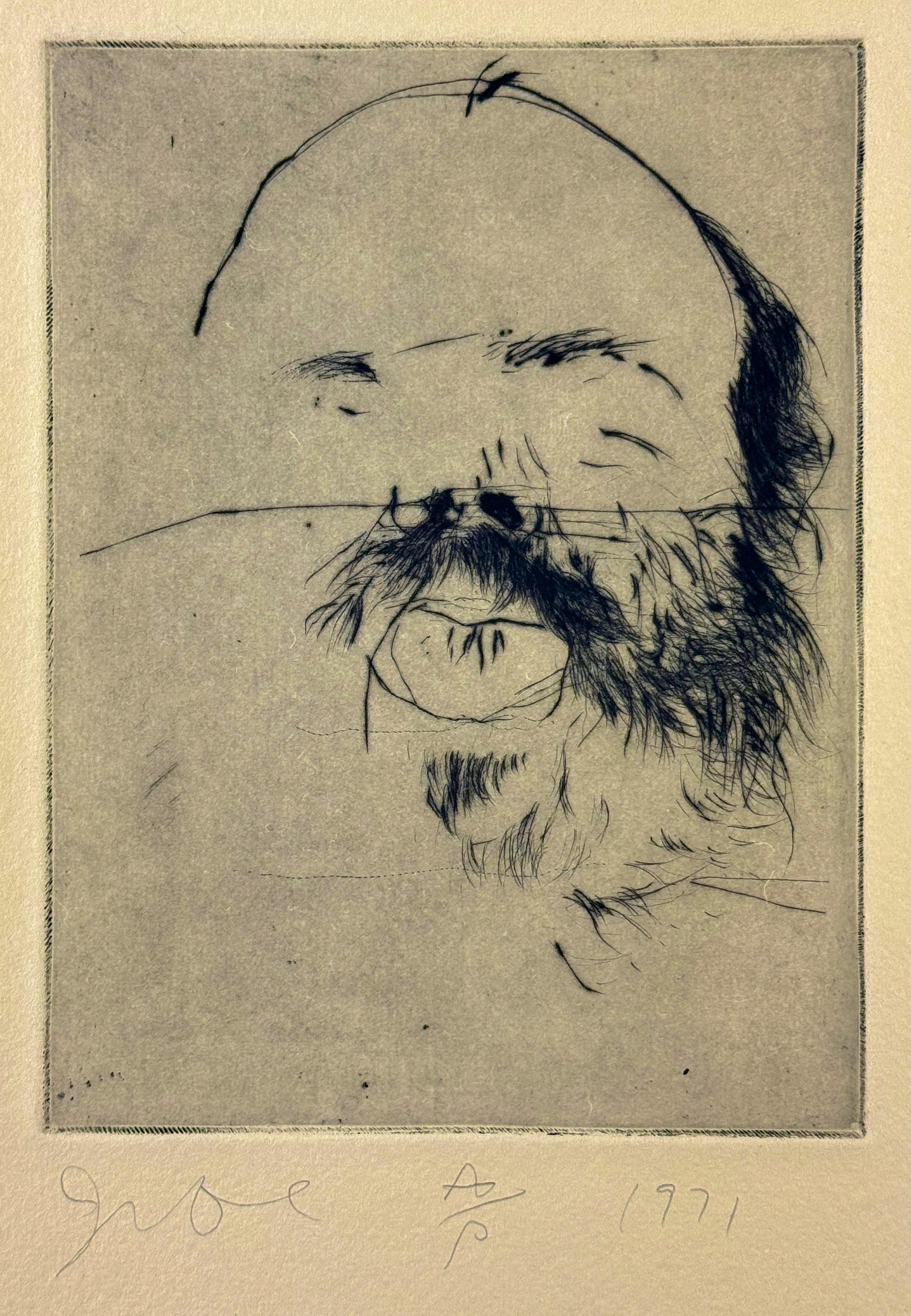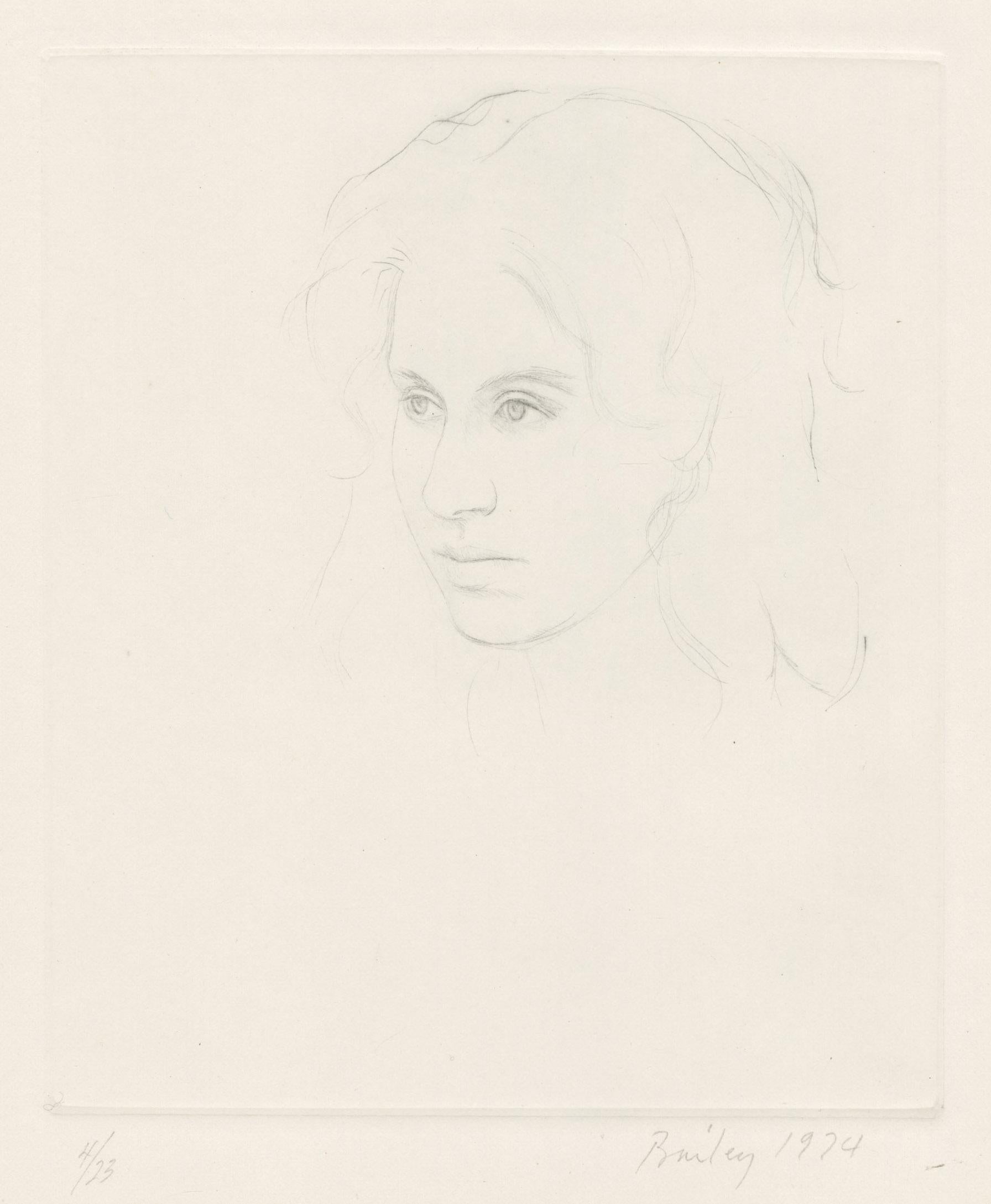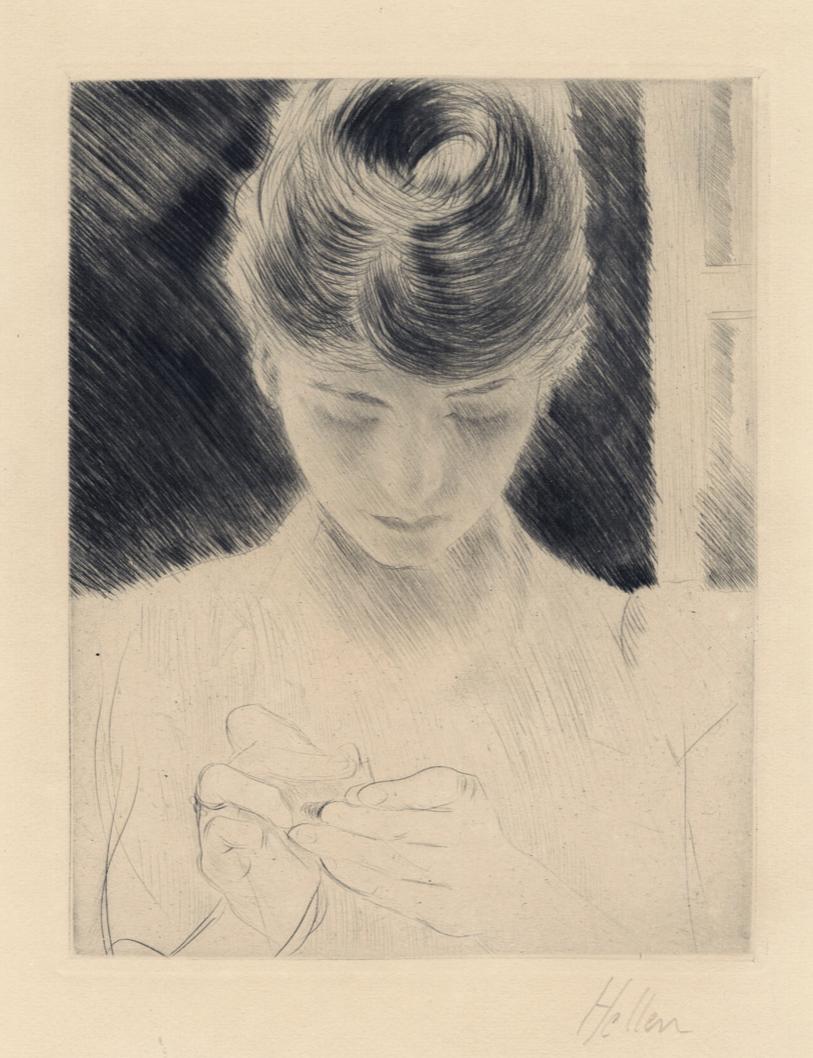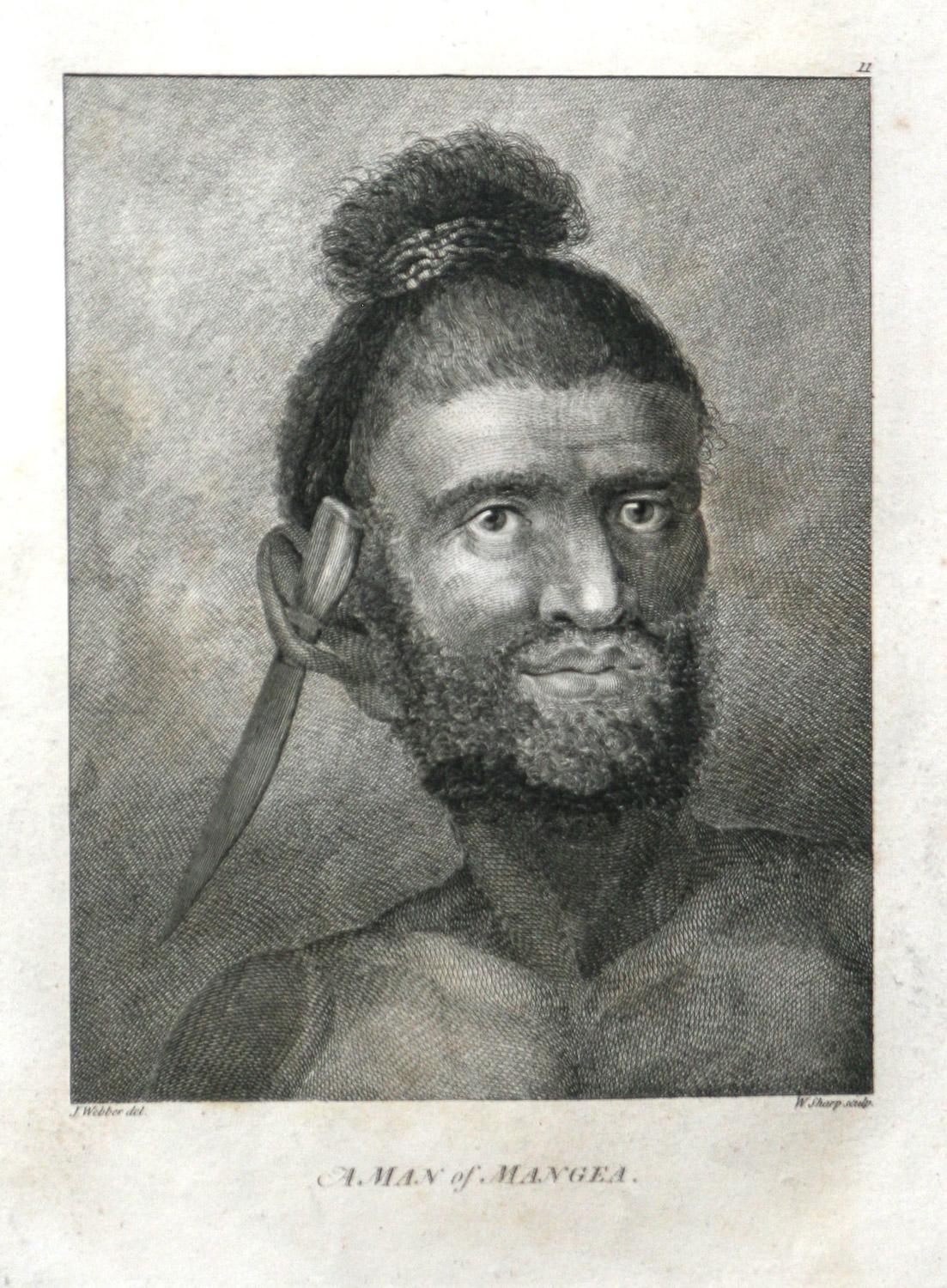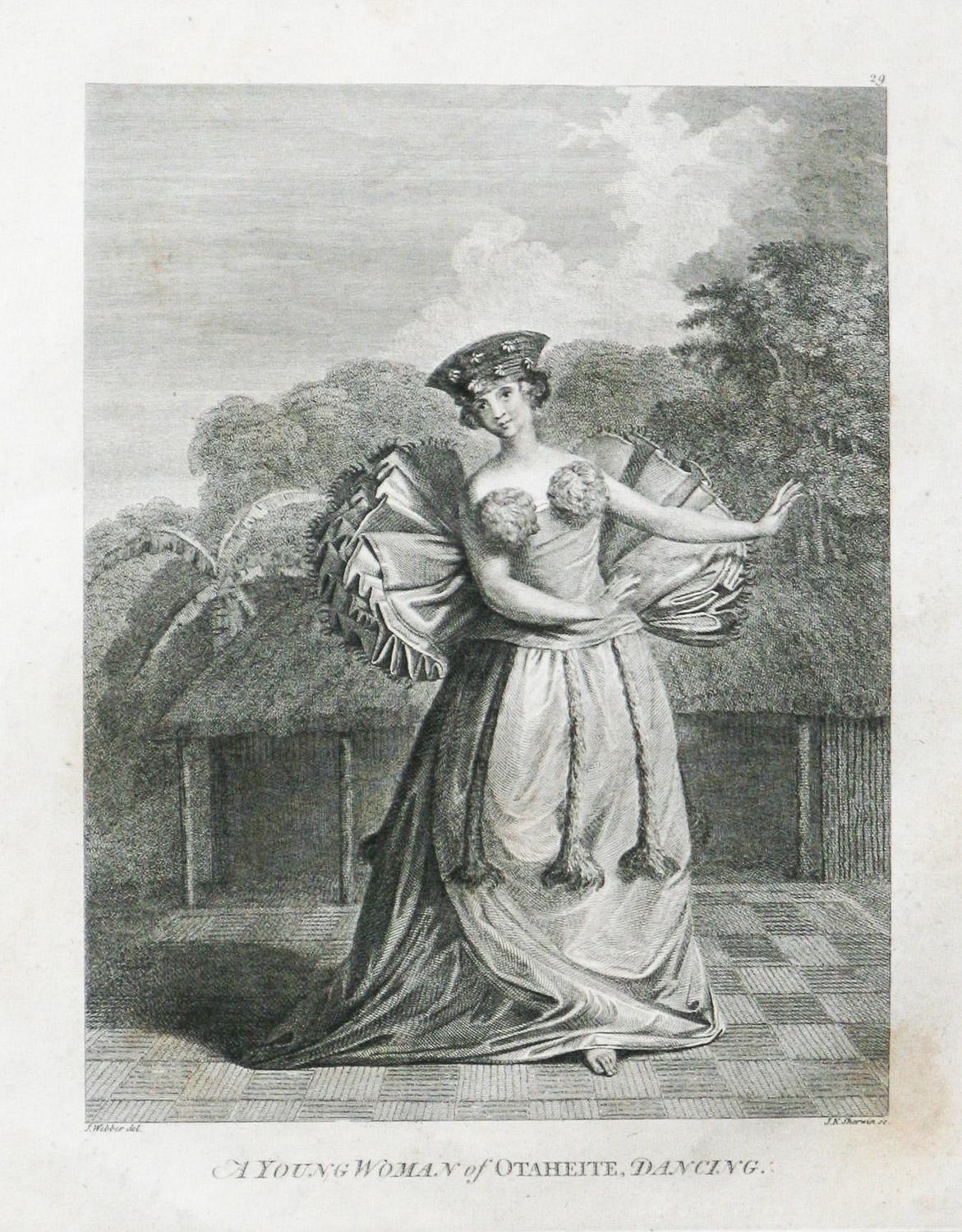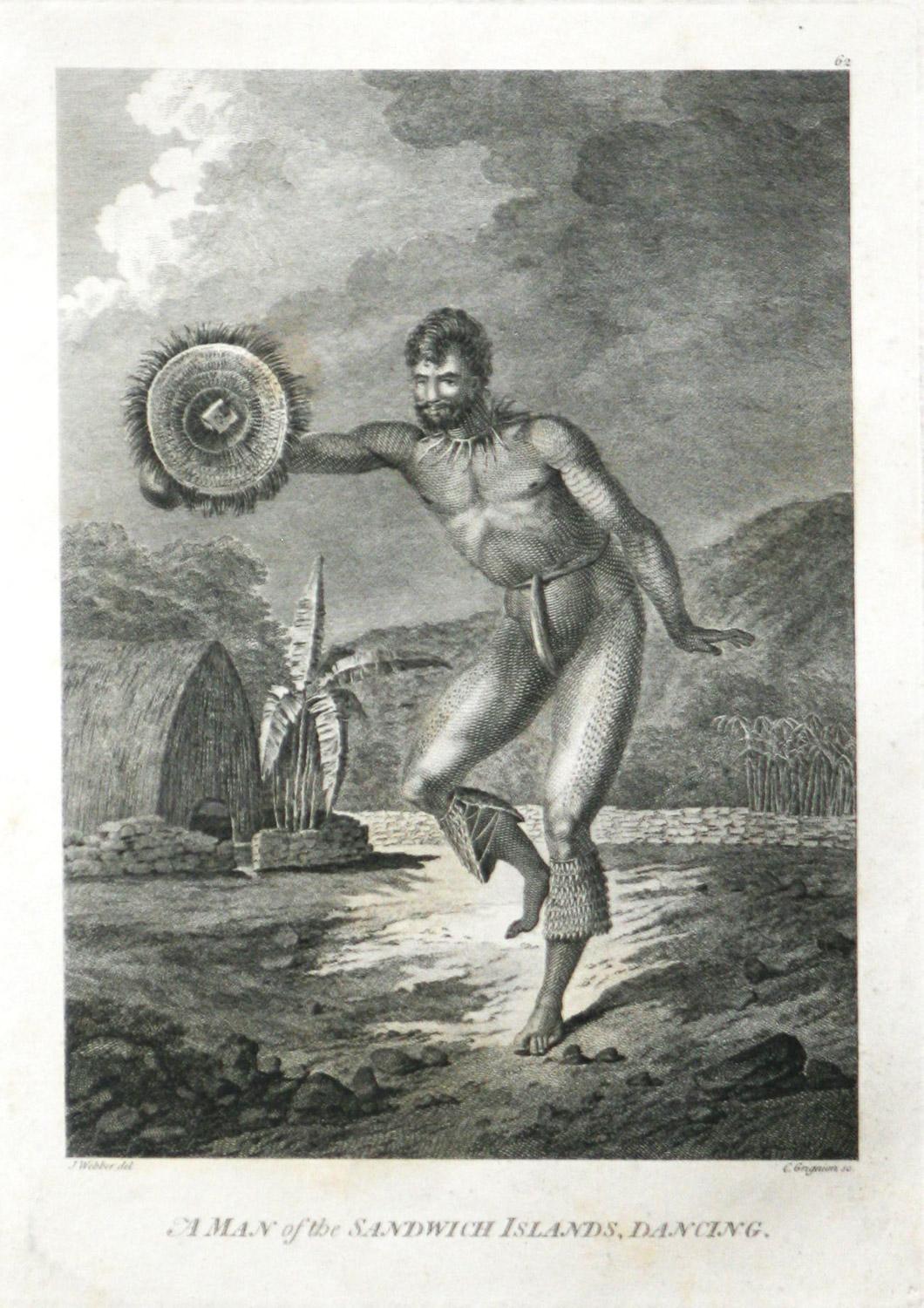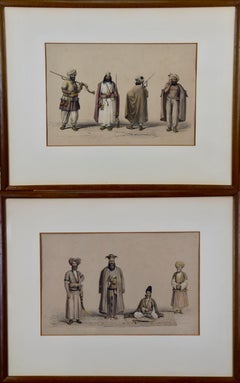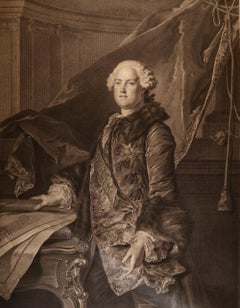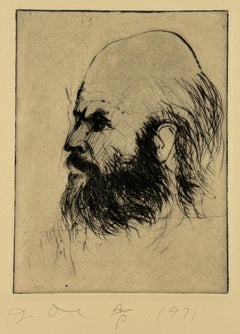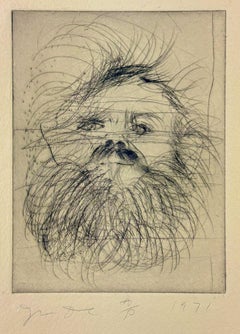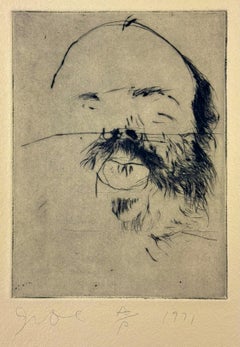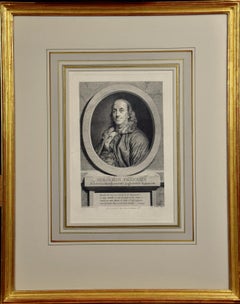
Benjamin Franklin: A Framed 18th Century Portrait of by Duplessis
View Similar Items
Want more images or videos?
Request additional images or videos from the seller
1 of 11
Joseph Duplessis Benjamin Franklin: A Framed 18th Century Portrait of by Duplessis 1788
1788
About the Item
About the Seller
5.0
Vetted Seller
These experienced sellers undergo a comprehensive evaluation by our team of in-house experts.
Established in 2011
1stDibs seller since 2019
233 sales on 1stDibs
Typical response time: 1 hour
More From This SellerView All
- 18th Century Engraved Portrait of George Savile, Marquis of Halifax by HoubrakenBy Jacobus Houbraken 1Located in Alamo, CAA superb 18th century engraved portrait of George Savile, Marquis of Halifax, Plate 82 in "The Heads of Illustrious Persons of Great Britain", written by...Category
Mid-18th Century Realist Portrait Prints
MaterialsEngraving, Laid Paper
- A Pair of 19th C. Engravings Depicting the Costumes and Weapons of Afghani MenLocated in Alamo, CAThese hand-colored lithographs are from "Character and Costumes of Afghanistan", written by Lockyer Willis Hart (of the 22nd Bombay Native Infantry). The lithographs were created by ...Category
1840s Realist Portrait Prints
MaterialsLithograph
- Marquis de Marigny: An 18th C. Wille Engraved Portrait after a Tocque PaintingBy Louis TocquéLocated in Alamo, CAThis is a mid 18th century engraved portrait of Abel François Poisson de Vandières, Marquis de Marigny by Jean Georges Wille after a painting by Louis Tocque...Category
Mid-18th Century Portrait Prints
MaterialsEngraving
- N. Lambert Seigneur de Thorigny: 17th C. Engraved Portrait After LargillièreBy Nicolas de LargillièreLocated in Alamo, CAThis is a 17th century engraving entitled "Messire Nicolas Lambert Seigneur de Thorigny, Conseiller du Roy" by Pierre Drevet after a painting by Noicolas de Largillière, published in Paris in 1698. This portrait depicts a three-quarter length view of Nicolas Lambert de Thorigny, who is dressed in elaborate robes and collar of a wealthy Parisian nobleman of the time. He is seated directed to the left and looking directly at the viewer. He is holding an inscribed note in his right hand. A magnificent billowing curtain is in the background. Lambert's coat of arms is shown in the center of the lower inscription area. In the inscription area is lettered with title, production detail: "Nic. Largilliere pinxit" and "Petr. Drevet sculpsit", and publication detail: "Se vend a Paris chez Drevet rüe du Foin au coin du College de Maître Gervais". Nicolas Lambert, Seigneur de Thorigny (1600-1664), was a French nobleman and military commander who lived in the 17th century. He served in the French army during the Thirty Years' War, a conflict that took place from 1618 to 1648 and involved many European powers. Lambert fought in several battles during the war and rose to the rank of colonel. After the war, Lambert returned to France and became involved in politics. He served as a member of the Estates General, a legislative body that advised the king, and as a governor of several provinces. He was a counsellor and confidant of King Louis XIV. He had the title of Président de la Chambre des Comptes. He also became a member of the French Academy of Sciences, a prestigious institution that promotes scientific research and scholarship. Lambert was known for his military expertise, his intelligence, and his commitment to public service. He iInherited the Hôtel Lambert in Paris from his brother Jean Baptiste in 1644 and hired some of the most prominent artists of the time, including Charles Le Brun to decorate and furnish the building. This beautiful old master engraving was created with impressive detailed technique. It is printed on laid, chain-linked paper. The sheet measures 18.5" high and 13.38" wide. The sheet is adhered to an archival backing paper at the top. There is a faint horizontal center fold and mild discoloration in the inscription area and in the upper margin on the right, with mild wrinkling here. The print is otherwise in very good condition, considering its age. This engraving is so rare, that no comparable prints could be identified for sale online. It is currently only listed in museum collections, including: The Metropolitan Museum of Art, The British Museum, The Louvre, The Riksmuseum, The Victoria & Albert Museum, The Fitzwilliam Museum at the U. of Cambridge, The Boston Museum of Fine Arts, Harvard Art Museums, The Finnish National Museum, The Philadelphia Museum. It is shown in the Metropolitan Museum's Cataloque of French paintings entitled: "French Paintings in The Metropolitan Museum of Art, published in 2018, page 36. The page is included in the photos. Nicolas de Largillière (1656-1746) was a French portrait painter who achieved great success and acclaim during the late Baroque and Rococo periods. He was born in Paris and trained under the painter Antoine Goubeau. He studied in Antwerp and London before returning to France. While in England he was a favorite painter of King Charles II and King James II of England...Category
Late 17th Century Portrait Prints
MaterialsEngraving
- The Duchess of St. Albans: A 17th C. Portrait After a Kneller PaintingBy (After) Sir Godfrey KnellerLocated in Alamo, CAThis is a 17th century engraved mezzotint portrait of the Duchess of St. Albans by John Smith, after a painting by Sir Godfrey Kneller. It was published in London by John Boydell in 1694. The Duchess of St. Albans (1642-1712) was a woman named Diana de Vere. She was born in 1642, the daughter of Aubrey de Vere, the 20th Earl of Oxford. In 1662, she married Charles Beauclerk, the illegitimate son of King Charles II and his mistress, Nell Gwyn. As a result of her marriage, Diana became the Duchess of St. Albans, and she and Charles had several children together. Diana was known for her beauty and charm, and she was a prominent figure in the court of King Charles II. Despite her husband's illegitimate birth, Diana was highly respected in the royal court and was known for her intelligence and wit. She was a patron of the arts and supported many artists and writers of the time. Diana lived through a tumultuous period of English history, including the Great Fire of London and the Glorious Revolution, which saw King James II replaced by William of Orange. She died in 1712 at the age of 70 and was buried in Westminster Abbey. Descendants of Diana and her husband, who was an illegitimate son of King Charles II, include Diana, Princess of Wales and her son William, Duke of Cambridge. An author wrote of her: "The line of Vere, so long renown’d in arms, Concludes with luster in St. Albans’s charms; Her conquering eyes have made their race complete, It rose in valor, and in beauty set." This striking mezzotint engraving depicts Diana, Duchess of St Albans in a three-quarter length pose, standing, wearing loose flowing dress and a wrap. She has a very serene, calm appearance as she is looking straight at the viewer. There is a landscape of trees in the background. The print is adhered in the corners to an archival backing, which is itself adhered in the upper corners to a larger backing. The print is trimmed to just beyond the plate mark. There are areas of discoloration in the margins and in the inscription area, but the print is otherwise in very good condition. The sheet measures 14.5" high and 10" wide. This mezzotint is held by multiple museums and institutions, including The British Museum, The National Portrait Gallery London, The Fine Arts Museum of Boston, The Lewis Walpole Library at Yale, The Yale Center for British Art, The Fitzwilliam Museum at Cambridge and The National Galleries of Scotland. The original Kneller painting is part of the British Royal Collection Trust and hangs in the King's Private Dining Room at Hampton Court Palace. Sir Godfrey Kneller (1646-1723) was a leading portrait painter of his time, particularly renowned for his depictions of the British aristocracy and royalty. He was born in Lübeck, Germany, and trained in Amsterdam under the painter Ferdinand Bol...Category
Late 17th Century Portrait Prints
MaterialsMezzotint
- Elizabeth, Countess of Northumberland: Mezzotint After a Painting by J. ReynoldsBy Joshua ReynoldsLocated in Alamo, CAThis is an 18th century mezzotint portrait of Elizabeth, Countess of Northumberland, Baroness Percy by Richard Houston after a painting by Joshua Reynolds, published in London by Robert Sayer in 1763. It is a rare, full length portrait of Elizabeth, who was known as Lady Betty. Lady Betty stands, facing to the right, holding her coronet, and wearing her peeress’s ermine and velvet robes over a brocade dress. In the background are a column, a billowing drape, and the grounds of Alnwick Castle...Category
Mid-18th Century Portrait Prints
MaterialsMezzotint
You May Also Like
- Self Portrait by Jim Dine (plate one from Self Portraits portfolio 1971)By Jim DineLocated in New York, NYJim Dine, Self Portrait 1971 drypoint on Hodgkinson Hand Made Tone-Weave paper Paper 18 x 14 in. / 46 x 36 cm Plate 8 x 6 in. / 20 x 15 cm plate one from Self Portraits (1971) portfo...Category
1970s Realist Portrait Prints
MaterialsDrypoint
$1,500 Sale Price61% Off - Self Portrait by Jim Dine (plate four from Self Portraits portfolio 1971)By Jim DineLocated in New York, NYJim Dine, Self Portrait drypoint on Hodgkinson Hand Made Tone-Weave paper Paper 18 x 14 in. / 46 x 36 cm Plate 8 x 6 in. / 20 x 15 cm plate one from Self Portraits (1971) portfolio ...Category
1970s Realist Portrait Prints
MaterialsEtching, Drypoint
- Self Portrait by Jim Dine (plate seven from Self Portraits portfolio 1971)By Jim DineLocated in New York, NYJim Dine, Self Portrait 1971 drypoint on Hodgkinson Hand Made Tone-Weave paper Paper 18 x 14 in. / 46 x 36 cm Plate 8 x 6 in. / 20 x 15 cm plate seven from Self Portraits (1971) port...Category
1970s Realist Portrait Prints
MaterialsEtching, Drypoint
- Untitled (Portrait)By William H. BaileyLocated in Fairlawn, OHUntitled (Portrait) Drypoint printed in blue-black graphite mixed with silver, 1974 Signed and dated lower ight (see photo) From: Series entitled Six Drypoints Edition: 23 (4/23) Numbered lower left (see photo) Print Shop: Crown Point Press Printer: Jeannie Fine Publisher: Parasol Press, New York Note: A portfolio is in the collection of the National Gallery, Australia, Fine Arts Museums of San Francisco- de Young/Legion of Honor, Davis Museum at Wellesley College and the Yale University Art Gallery. Condition: Excellent Image/Plate size: 6 3/8 x 5 3/8 inches Sheet size: 24 x 20 inches From a portfolio of six drypoints, printed with unqiue combination of blue-black graphite shavings combined with silver to create the appearence of an original drawing. I know of no other artist to use a similar printing technique. William Bailey studied art at the University of Kansas, Yale University and Yale School of Art where he studied with Josef Albers receiving his MFA in 1957. Mr. Bailey’s first exhibition in New York was at Robert Schoelkopf Gallery in 1968, where he showed regularly until its closing in 1990. During the 90’s he exhibited at the Andre Emmerich Gallery and on its closing, exhibited at the Robert Miller Gallery. In 2004 Bailey moved to the Betty Cuningham Gallery where his most recent exhibition was held from April 30 - June 11, 2016. Mr. Bailey’s work has been exhibited extensively in both America and Europe. He is represented in the collections of The Whitney Museum of American Art, The Museum of Modern Art, the Pennsylvania Academy of Fine Arts, and the Hirschhorn Museum and Sculpture Garden, among others. He was awarded a Guggenheim Fellowship in painting in 1965. Mr. Bailey was elected to The National Academy of Design in 1983 and to The American Academy of Arts and Letters in 1986. Mr. Bailey taught at The Yale School of Art from 1958 to 1962 and from 1969 to 1995. He has also taught at The Cooper Union, University of Pennsylvania and Indiana University. He maintains studios in New Haven and in Umbertide, Italy. Courtesy Betty Cunningham Gallery Tribute to William Bailey THE NEW YORK TIMES William Bailey, whose pristine, idealized still lifes and female nudes made him one of the leading figures in the return of figurative art in the 1980s, died on April 13 at his home in Branford, Conn. He was 89. His death was confirmed by his daughter, Alix Bailey. Beyond his painting, Mr. Bailey influenced generations of students in his many years as a teacher at the Yale School of Art. In some of his best-known work, Mr. Bailey arranged simple objects — the eggs, bowls, bottles and vases that he once called “my repertory company” — along a severe horizontal shelf, or on a plain table, swathing them in a breathless, deceptively serene atmosphere heavy with mystery. William Bailey, Modernist Figurative Painter, Dies at 89 He swathed his nudes and still lifes of eggs, vases, bottles and bowls in a breathless, deceptively serene atmosphere heavy with mystery. The painter William Bailey in 2009. He was never given a career survey in a major museum, but his influence, particulary on students at Yale, was deep. Ford Bailey By William Grimes for the New York Times April 18, 2020 William Bailey, whose pristine, idealized still lifes and female nudes made him one of the leading figures in the return of figurative art in the 1980s, died on April 13 at his home in Branford, Conn. He was 89. His death was confirmed by his daughter, Alix Bailey. Beyond his painting, Mr. Bailey influenced generations of students in his many years as a teacher at the Yale School of Art. In some of his best-known work, Mr. Bailey arranged simple objects — the eggs, bowls, bottles and vases that he once called “my repertory company” — along a severe horizontal shelf, or on a plain table, swathing them in a breathless, deceptively serene atmosphere heavy with mystery. His muted ochres, grays and powdery blues conjured up a still, timeless world inhabited by Platonic forms, recognizable but uncanny, in part because he painted from imagination rather than life. “They are at once vividly real and objects in dream, and it is the poetry of this double life that elevates all this humble crockery to the realm of pictorial romance,” Hilton Kramer wrote in The New York Times in 1979. Mr. Bailey’s female figures, some clothed in a simple shift or robe and others partly or entirely nude, are disconcertingly impassive, implacable and unreadable, fleshly presences breathing an otherworldly air. The critic Mark Stevens, writing in Newsweek in 1982, credited Mr. Bailey with helping to “restore representational art to a position of consequence in modern painting.” But his version of representation was entirely idiosyncratic, seemingly traditional but in fact “a modernism so contrarian,” the artist Alexi Worth wrote in a catalog essay for the William Harrison Bailey was born on Nov. 17, 1930, in Council Bluffs, Iowa. His father, Willard, worked in radio advertising and moved the family from city to city in the Midwest. Bill was in his early teens when his father died. His mother, Marjorie (Cheyney) Bailey, was a homemaker who later worked as an accountant for her second husband, Fred...Category
1970s Realist Portrait Prints
MaterialsDrypoint
- Jeune Femme Cousant; Madame Helleu (Young Woman Sewing, artist's wife)By Paul César HelleuLocated in Middletown, NYParis: Gazette des Beaux Arts, 1892. Etching and dry point on cream laid paper. 7 9/16 x 5 7/8 inches (191 x 148 mm), full margins. Signed in pencil, lower right margin. A dark, ink...Category
Late 19th Century Realist Portrait Prints
MaterialsDrypoint, Etching
- Charles Lee Esq.Located in Boston, MAChaloner Smith (Engraver not ascertained, Class III) 9. Published by C. Shepherd, Oct. 31, 1775 London. Inscribed in plate lower center: "Charles Lee, Efq. / Major General of the Con...Category
Late 18th Century Realist Portrait Prints
MaterialsMezzotint
Recently Viewed
View AllMore Ways To Browse
A Frame
Gilded Gold Frame
Frame Print 18th Century
American Gilded Frame
18th Century French Copper
French Portraits 18th
18th Century French Portraits
1790 America
18th Century Military
Philadelphia 18th Century
18th Century Philadelphia
Antique Dollars
Antique Dollar
Antique Shed
Antique Sheds
King George 3
Dior A Versailles
French Revolution Plate
